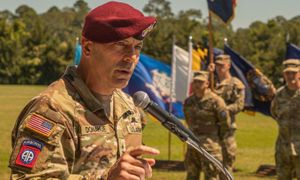SpaceX's latest mission marked a significant moment for NASA, as two astronauts stranded on the International Space Station (ISS) since June welcomed their new ride home last Sunday—a Dragon capsule, which docked at the space station under the cover of darkness.
The rescue operation had been set in motion just the day before when SpaceX launched the Dragon capsule, carrying two astronauts and leaving two seats empty for the ones needing to make the trip back to Earth, namely Butch Wilmore and Suni Williams. The Dragon capsule successfully perched itself alongside the ISS, 265 miles above Botswana, allowing the awaiting astronauts to finally reunite.
The necessity for this daring rescue mission emerged due to safety concerns surrounding their original spacecraft, Boeing's Starliner capsule, which had suffered propellant failures and helium leaks during its first crewed test flight. Rather than risk putting lives on the line, NASA made the decision to transfer Wilmore and Williams to SpaceX's Dragon for their return, prioritizing safety over schedule.
Having begun what was meant to be roughly one week of duty, Wilmore and Williams instead faced nearly eight months of extravehicular sojourn. Meanwhile, Drago, the Dragon capsule, will continue to carry NASA’s Nick Hague and Alexander Gorbunov of the Russian Space Agency, who are now tasked to remain aboard the ISS until February.
“I just want to say welcome to our new companions,” expressed Commander Williams as Hague and Gorbunov entered the space station, greeted warmly by their fellow astronauts. Their reunion illustrated not just the excitement of mission operations but the camaraderie and support inherent among space travelers.
While astronauts often sign up for lengthy missions, the unforeseen extension of Wilmore and Williams' stay involved adapting to life on the ISS under more challenging circumstances than anticipated. The unplanned length of their mission has certainly been tested by the dynamic environment of outer space, involving rigorous exercises, scientific experiments, and the task of maintaining the ISS itself, ensuring all systems function without hitches.
Summoning up the resilience needed to handle unexpected trials is part and parcel of the life of astronauts. Training manuals do help, but nothing can quite prepare someone for the stark reality of spending extended periods—up to many months—away from home and on high alert, conducting research and dealing with maintenance duties. They have coped with changing sometimes difficult living conditions, adapting to routines and balancing work with recreation to keep morale high.
This rescue mission wasn’t just about so-called ‘riding shotgun’ back to Earth. It showcased the continuing partnership between NASA and private enterprises like SpaceX, who have forged strategic partnerships to tangle with challenges and push boundaries beyond what was thought possible even just decades ago.
The logistics of moving cargo and crew between orbiting platforms has proven increasingly complex and dynamic, making relationships with private enterprises more necessary than ever. With their shuttle programs long shuttered, NASA’s collaboration with SpaceX signifies the new era of human space exploration, allowing them to expand beyond earthly limits.
Of course, this transition to partner with private firms isn’t without its share of concern or scrutiny. Boeing's technical setbacks have raised eyebrows, leaving some to speculate just what contingencies are put in place should another crisis arise. The integrity of the Starliner’s testing process is now being reflected on closely as the agency digs deep to analyze what led to the leaks and failures during the initial operations.
Even with such hurdles, the cooperation between NASA and SpaceX holds great promise for future expeditions—including those planned for the Artemis program, which aims to return humans to the Moon and even explore Mars down the line. With renewed vigor for space exploration, these events underline the importance of safety and collaboration among astronauts and supporting teams back on Earth.
For now, Wilmore and Williams have their farewell to ISS period cut short, with the Dragon capsule set to return them sometime next year. Until then, they—along with their newfound companions—will continue conducting research and ensuring the space station operates smoothly, maintaining the human presence beyond our planet. This bold chapter of space travel, laden with potential but fraught with challenges, epitomizes the spirit of exploration, as humankind also treads new paths beyond the stars.
The legacy left behind by the ISS astronauts speaks to the resilience of humanity—venturing forth against the surmounting uncertainties of the cosmos. Rescued and prepared for the next leg of their adventures, the welcomed returning astronauts symbolize just how bright the future looks for space exploration and collaboration.



